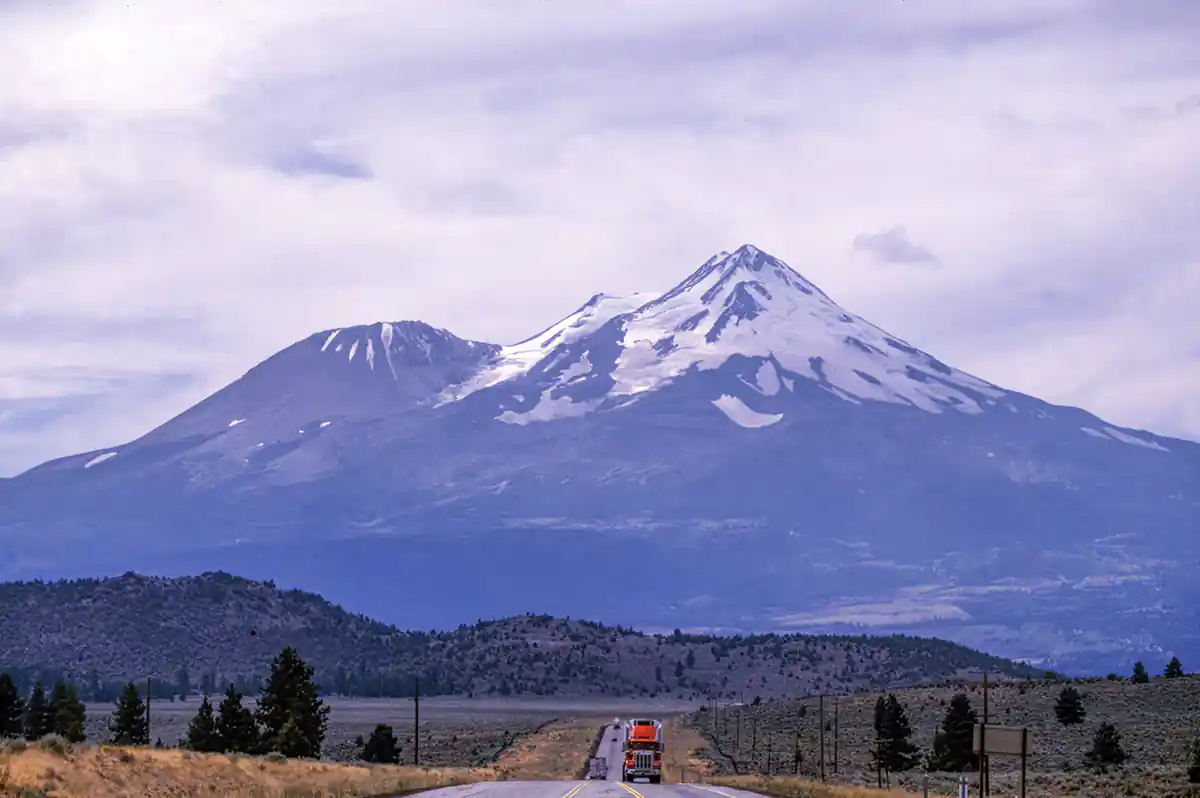Mount Shasta, California
In the Cascade Range of northern California, Mt. Shasta is a double-peaked, infrequently active stratovolcano rising to 14,162 feet (4317 meters). Geologists speculate that it began forming roughly 593,000 years ago. The largest volcanic peak in the continental United States, Mt. Shasta, has five glaciers and numerous steam vents feeding three rivers. Long revered as a sacred place by multiple Indian tribes, including the Wintu, Karuk, Okwanuchu, and Modoc, the mountain takes its name from the local Sastise (Shastan) Indians. These tribes have used specific sites on Shasta for training medicine men and women, for spiritual vision quests, and for healing and guidance.
On the mountain's lower, forested slopes, plants and other natural materials are still gathered for food, medicinal and ceremonial use. Shasta's wildlife includes eagles, black bears, and wolves, but the bighorn sheep, grizzlies, and antelopes commonly sighted in the 19th century have disappeared. Europeans first saw the mountain in 1827; the first recorded ascent was in 1854. Trails to the summit now allow the climb to be made up and down in one day. The USGS estimates that Shasta has erupted at least once every 800 years during the past 10,000 years and about once every 300 years during the past 3500 years. In 1786, the French explorer Laperouse claimed to have seen a volcanic eruption from the sea, but there is no definitive proof of this.
Numerous mysterious legends and psychic messages speak of the significance of Mt. Shasta as a place of powerful earth energies. Some of the oldest legends tell of a tribe of dwarf-like people who are believed to live within the center of the mountain and be descendants of the pre-Antlantean culture of Lemuria. Hunters and campers exploring the high-altitude forests of Mt. Shasta occasionally report seeing these small beings running through the woods. Contemporary psychics speak of the mountain as the center of a powerful energy vortex that radiates a vitalizing and healing energy throughout the northwestern US. More than any other mountain in North America, Mt. Shasta is a focal point for contemporary spirituality, attracting individual seekers and various religious groups. Mt. Shasta is also said to be energetically linked with Mt. Katahdin, a sacred mountain in Maine. Logging interests and resort developers are constantly threatening the great forests and wonderful peacefulness of Mt. Shasta. Prayers and the focused attention of contemporary pilgrims will assist in protecting this magnificent sacred place.

Martin Gray is a cultural anthropologist, writer and photographer specializing in the study of pilgrimage traditions and sacred sites around the world. During a 40 year period he has visited more than 2000 pilgrimage places in 160 countries. The World Pilgrimage Guide at sacredsites.com is the most comprehensive source of information on this subject.

